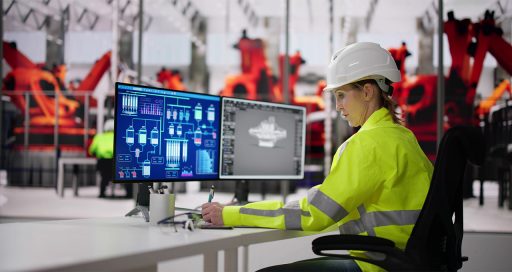The interest in predictive maintenance and investments made in CMMS indicate how important equipment availability is to businesses.
![]()
In the wake of artificial intelligence, predictive maintenance is the latest benchmark in terms of modern technology and the biggest craze for manufacturers. According to a study conducted by KPMG and business magazine L’Usine Nouvelle in September 2018, nearly 50 % of senior executives say they are implementing this technology, which is used to anticipate equipment failure thanks to data analytics. This is a significant figure but one that “is more relevant if you look at the increasing emphasis on maintenance in factories than if you focus on the predictive dimension alone,” says Aleksandar Maksimovic, maintenance & services technical manager at Actemium (VINCI Energies). The same study indicates that preventive maintenance, involving a schedule of checks and measurements, is popular among 91 % of respondents. Equipment availability is the top priority for around two-thirds of the manufacturers interviewed. Maksimovic believes that there isn’t an ideal universal type of maintenance, but rather that there are various forms that need to be defined according to the company’s process and objectives.
There isn’t an ideal universal type of maintenance but rather there are various forms that need to be defined according to the company’s process and objectives
“For production lines that have been designed to be very reliable, it’s acceptable to use corrective maintenance and replace a part when it fails,” he explains. “In other cases, for example, baggage handling in airports is a redundant system, if a line is momentarily suspended then other ones can be used in place of that and preventive maintenance is adequate. Predictive maintenance is pertinent when failure can severely affect production performance or at worst, put people’s lives at risk, primarily in the nuclear and aviation sectors for instance.”
ROI and lean management
“At the end of the day, the choice of maintenance strategy comes down to return on investment,” says Maksimovic. “Predictive maintenance shouldn’t be used where it’s not needed.” He adds: “We don’t talk much about lean management but properly-understood maintenance is part of this method,” which aims to optimise production by reducing faults and maximising production time.
Limiting failure means improving company profitability, and it’s achieved by optimising the management of the spare parts inventory and deploying maintenance teams at the right time and in the right place. The tools used to implement and improve maintenance are based on data. These may be the most recent predictive systems driven by sensor networks and algorithms, or older computerised maintenance management systems (CMMS), a technology which has been or is being adopted by 83 % of business leaders according to the KPMG-Usine Nouvelle study.
Data ownership
Actemium, an expert in CMMS integration, helps businesses select tools then integrate and configure them right through to the operational stage. This support involves “close cooperation between the company’s frontline employees and the data processing specialists that operate at Actemium,” states Maksimovic. Critical production data is and remains “the property of the business,” adds the Actemium manager who disagrees with the idea that the lack of digital experts in factories is hindering the development of predictive maintenance. Digital transformation may often come up against a shortage of skills and methods, but “it’s the tools and their specifications which, with the help of Actemium’s maintenance experts, need to be incorporated into companies, not just data scientists.”
For a digital transformation-driven maintenance project to succeed it must “involve all the players in a production process from the operator right up to the highest management level in a group.” An increasing number of maintenance-focused businesses are involving all levels of the organisation in their digital transformation projects. “Identified as a performance driver and no longer just as an expense, maintenance is seen from a strategic point of view. It’s a key building block for Industry 4.0,” notes Maksimovic.
10/10/2019
Learn more:
https://www.usinenouvelle.com/





